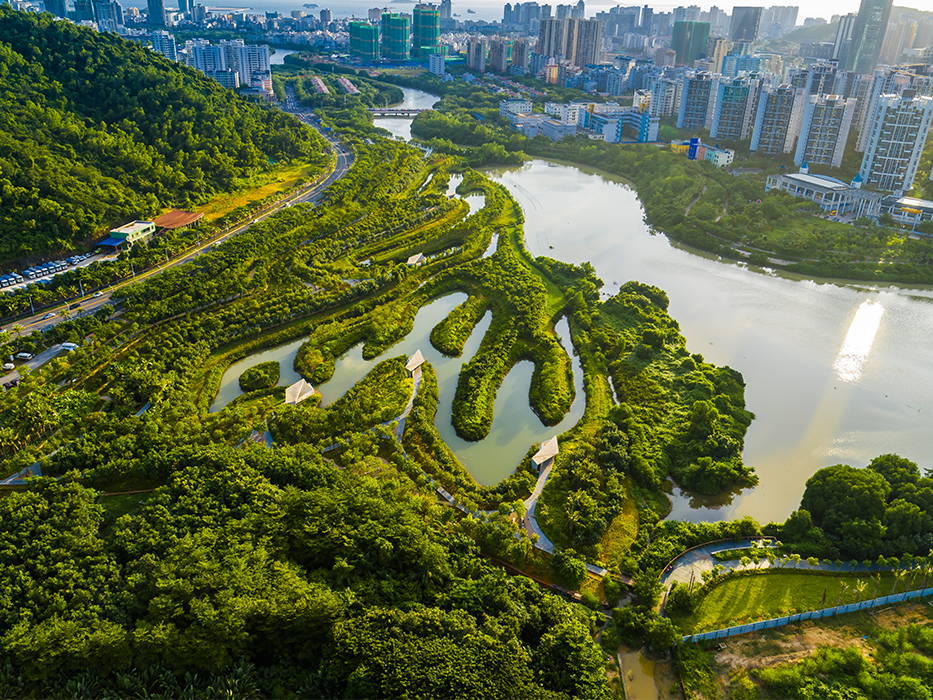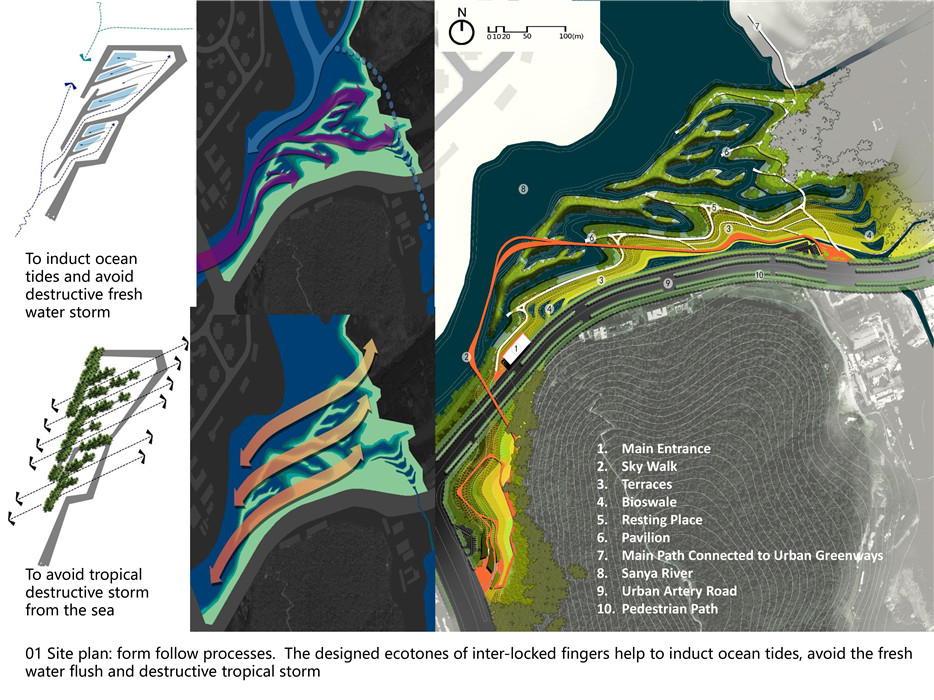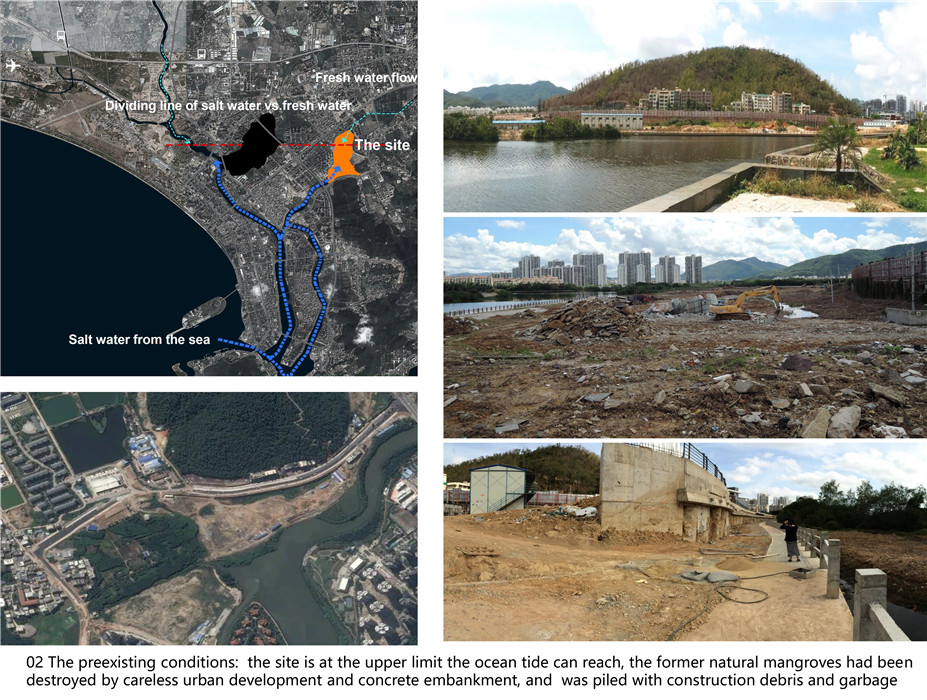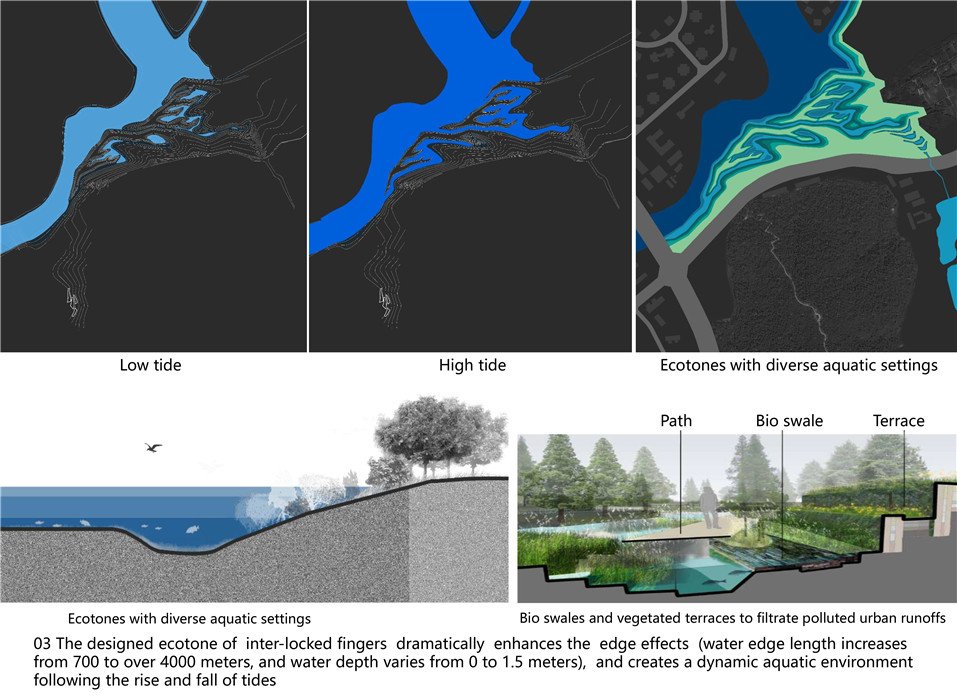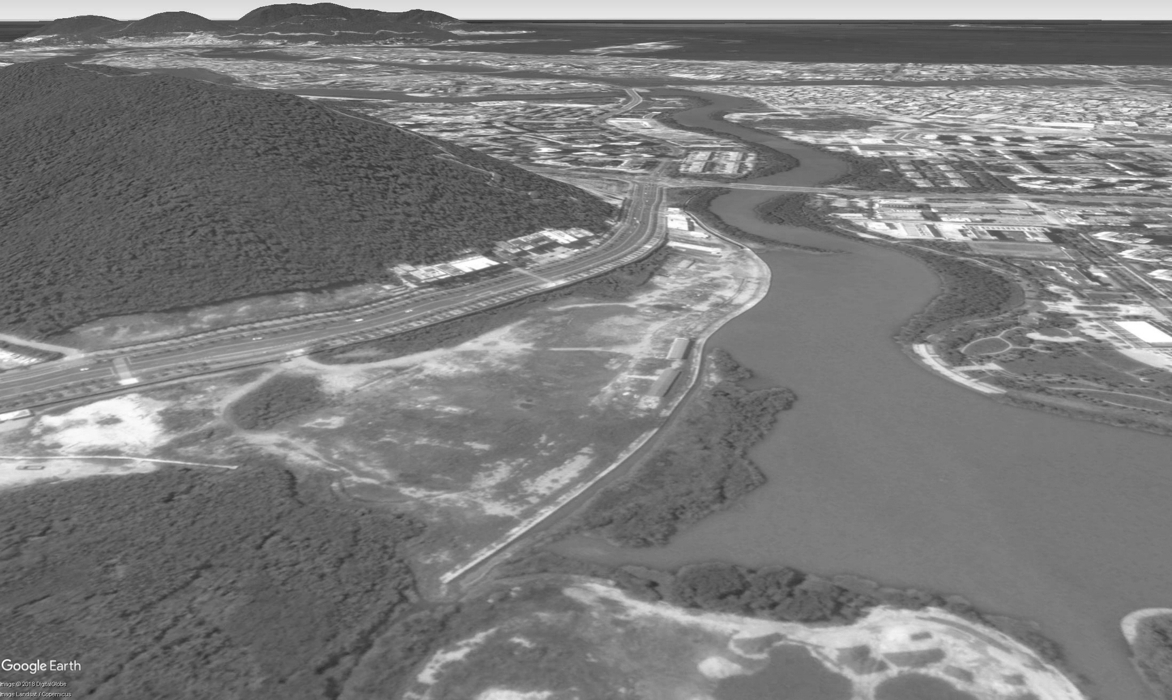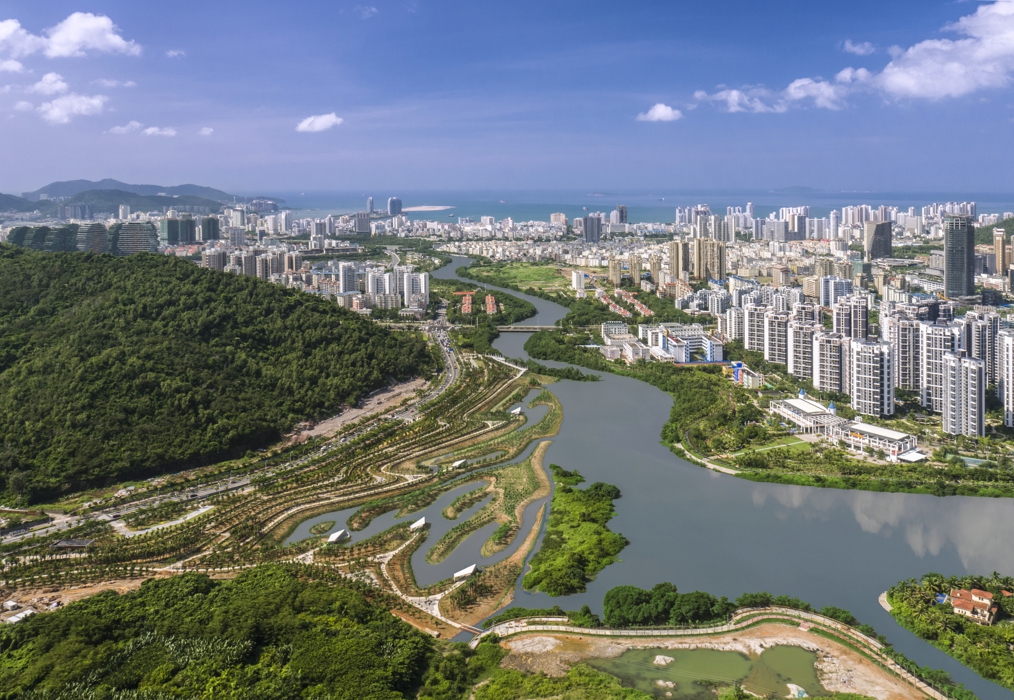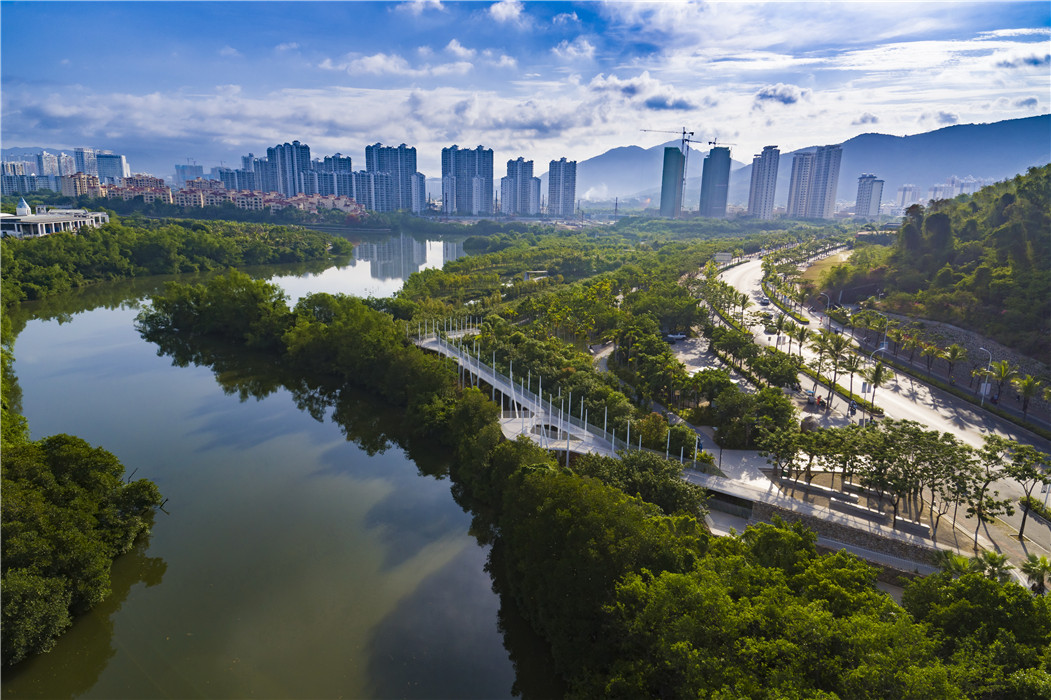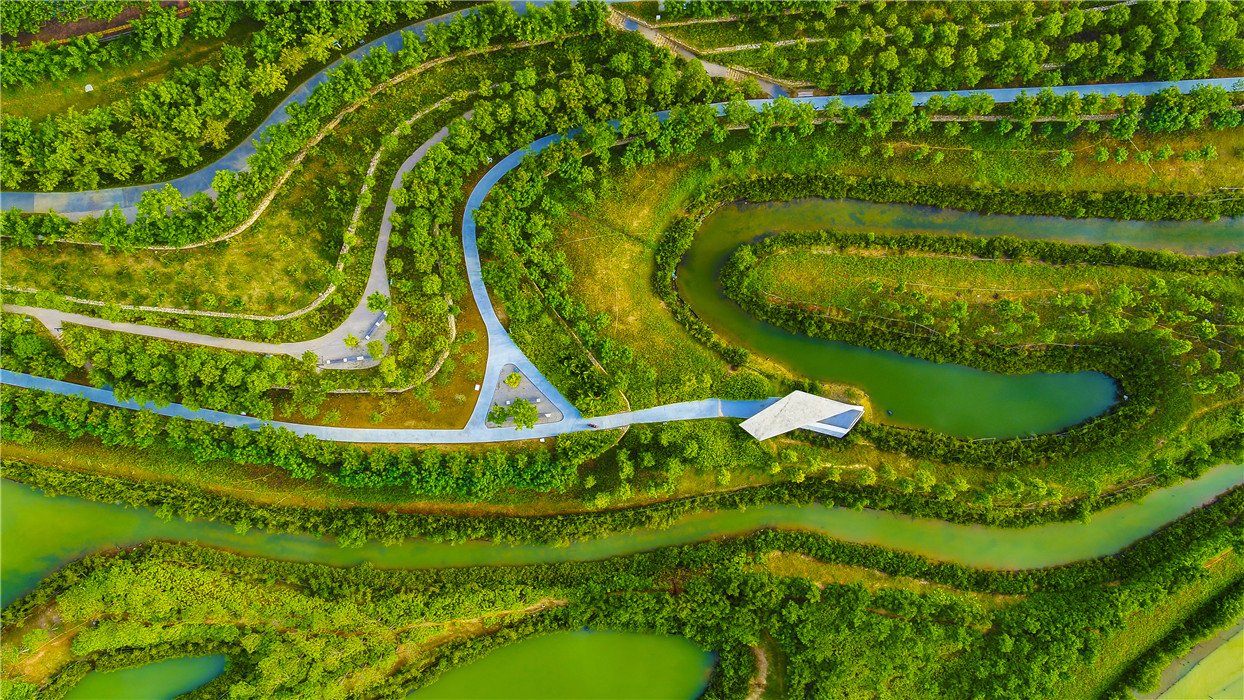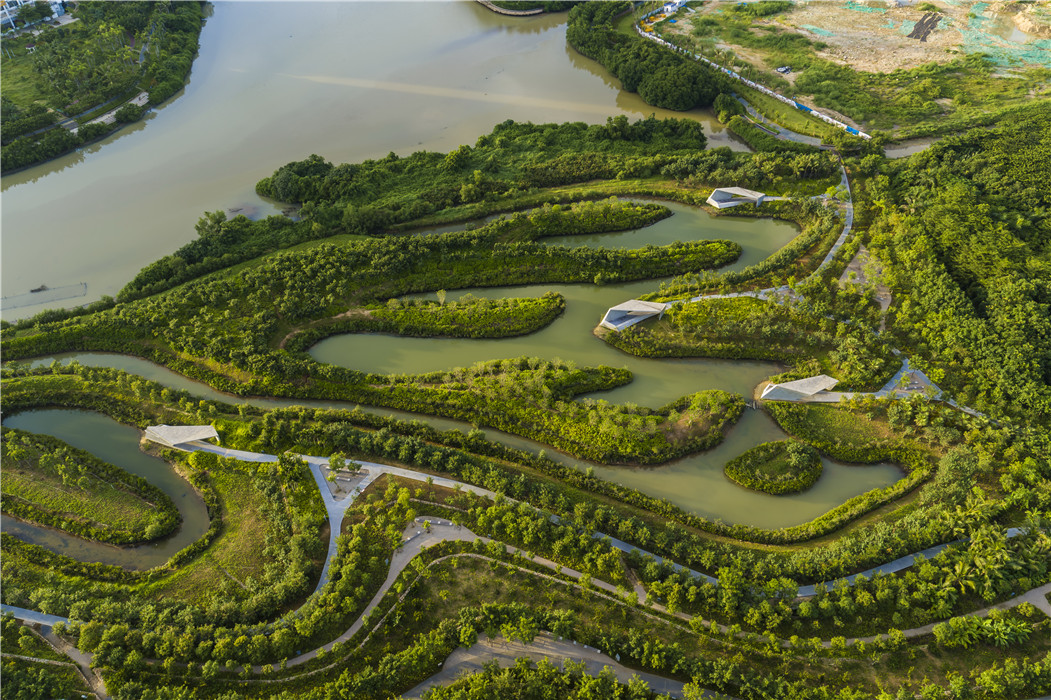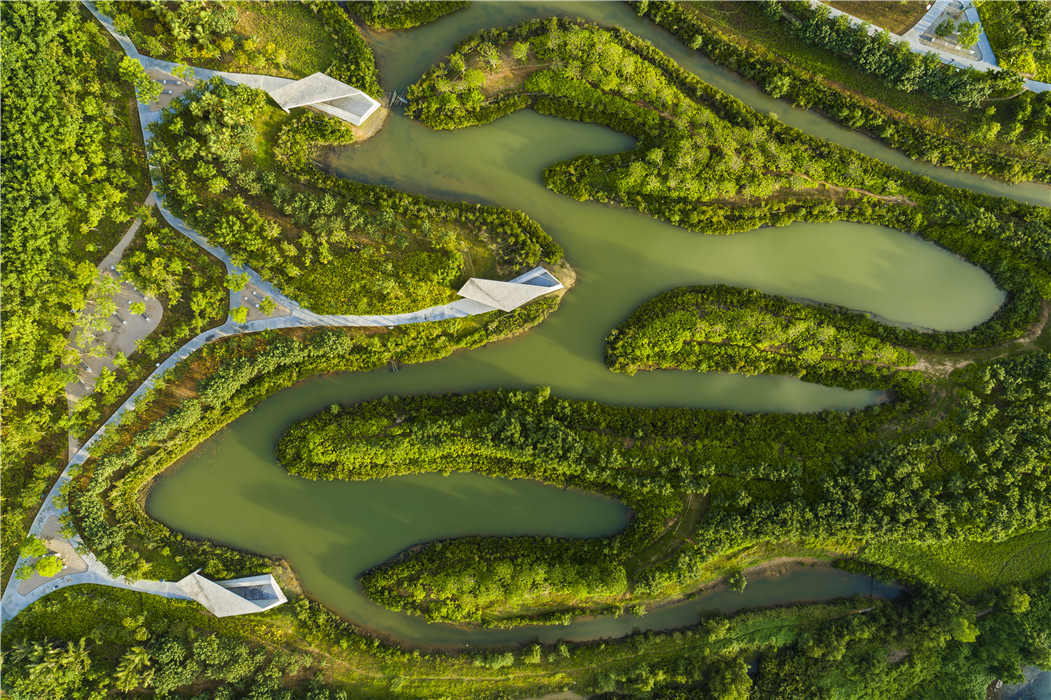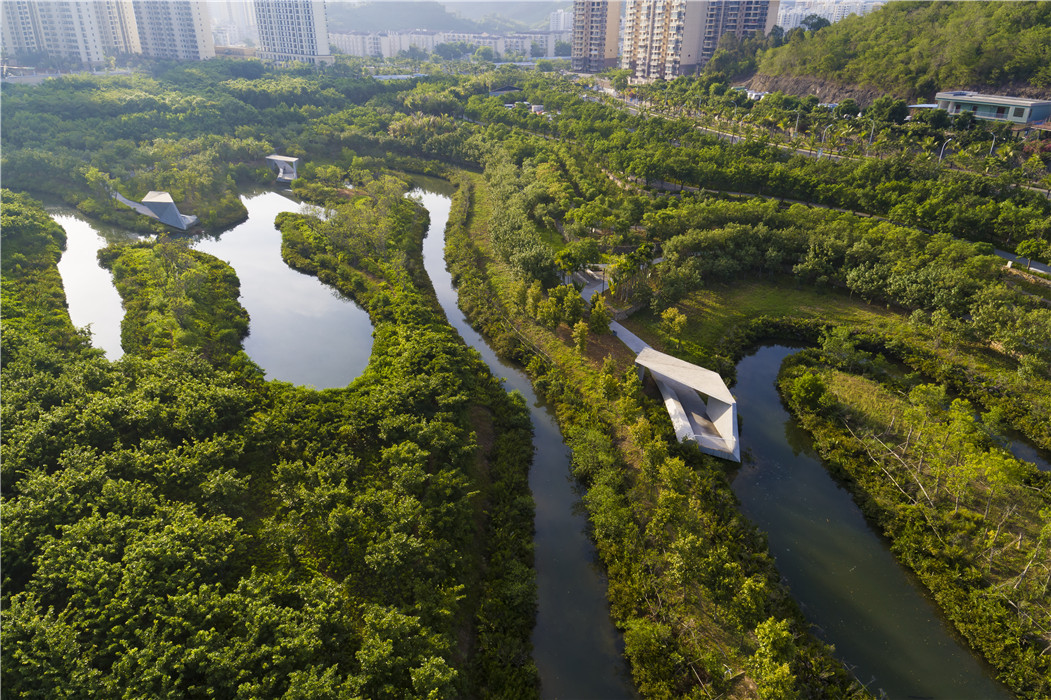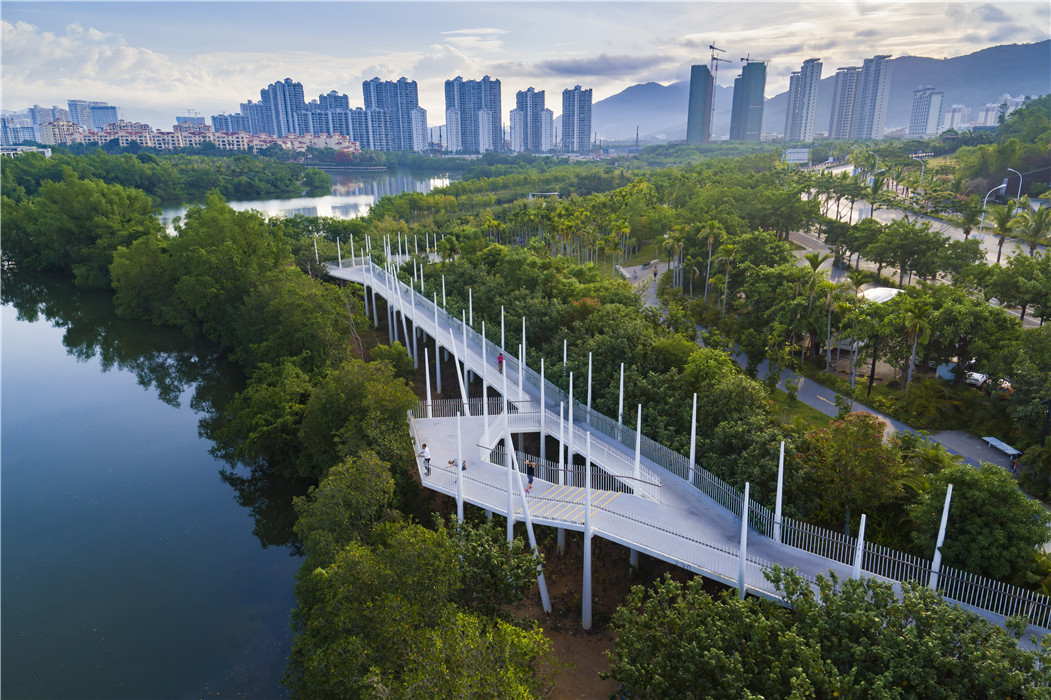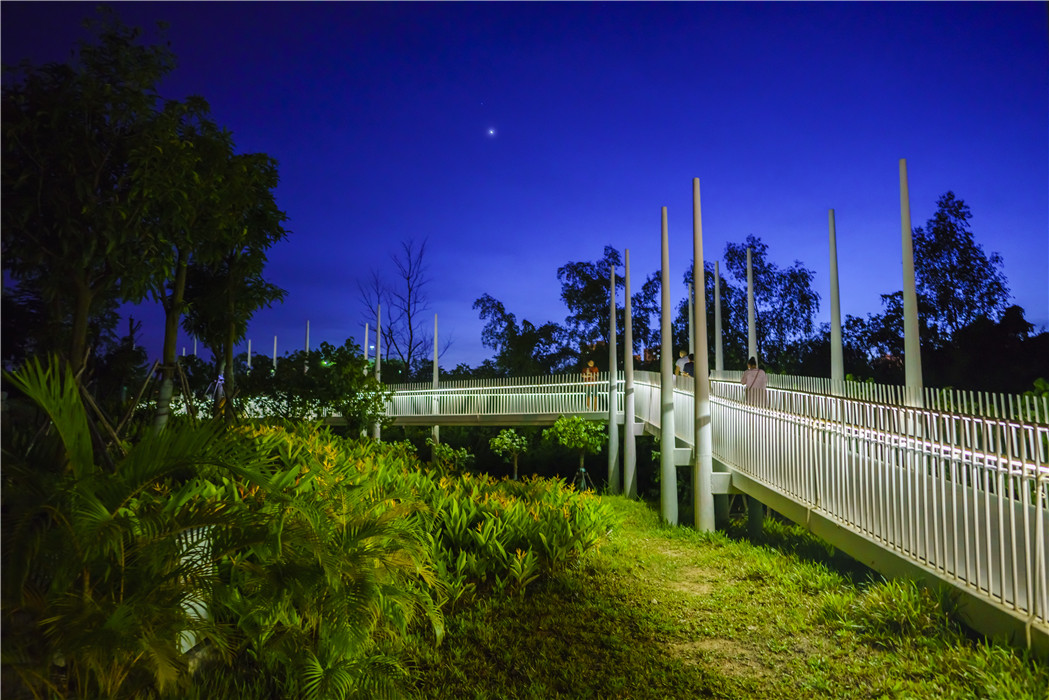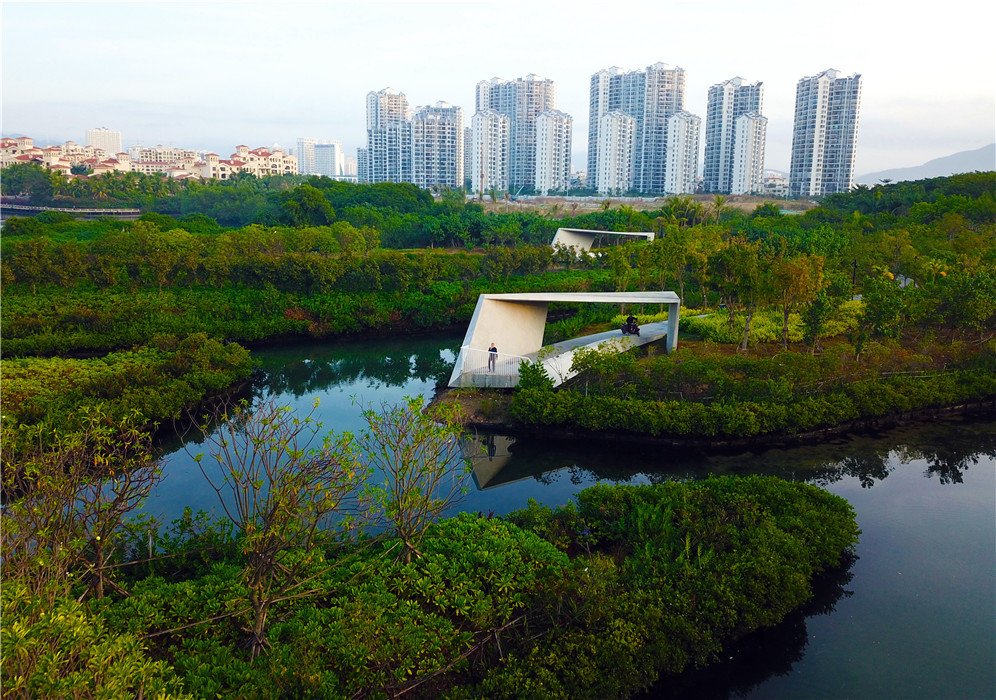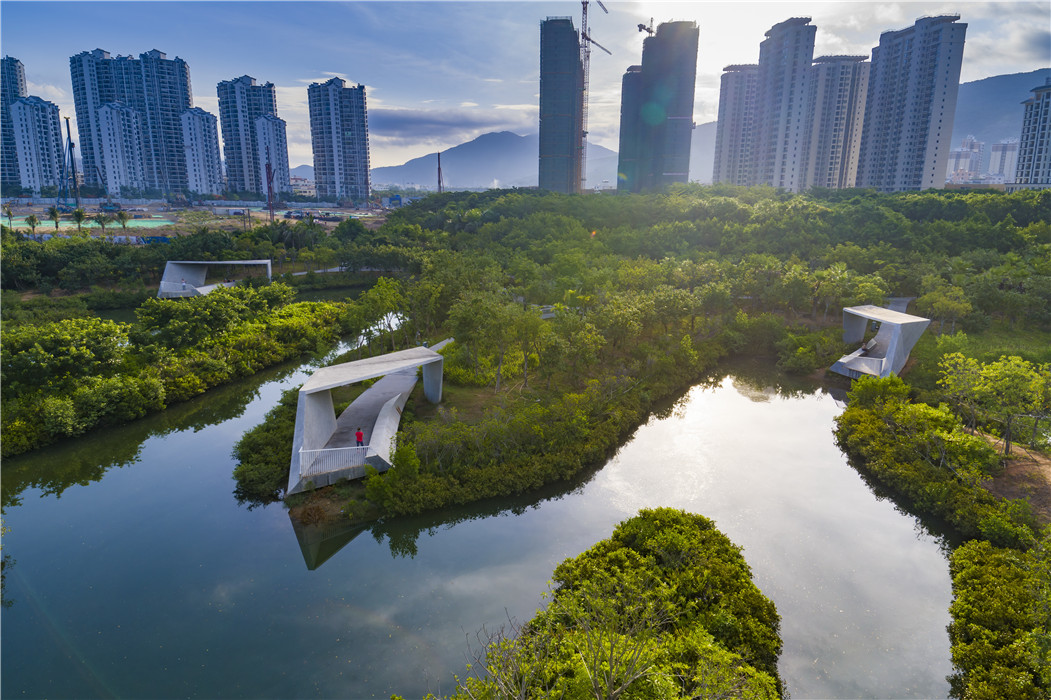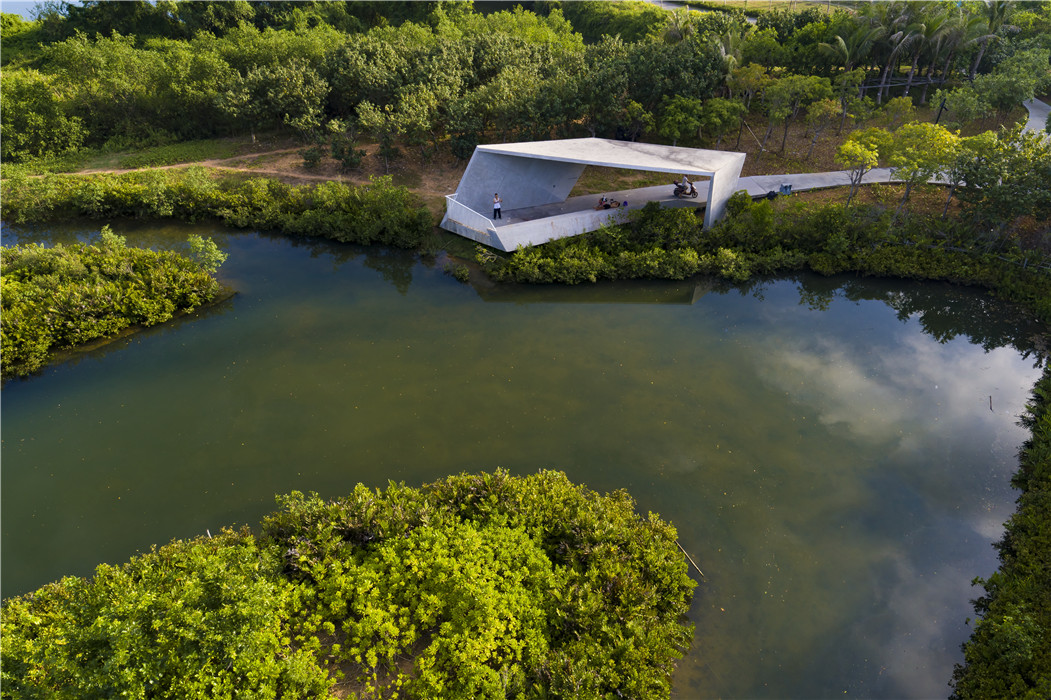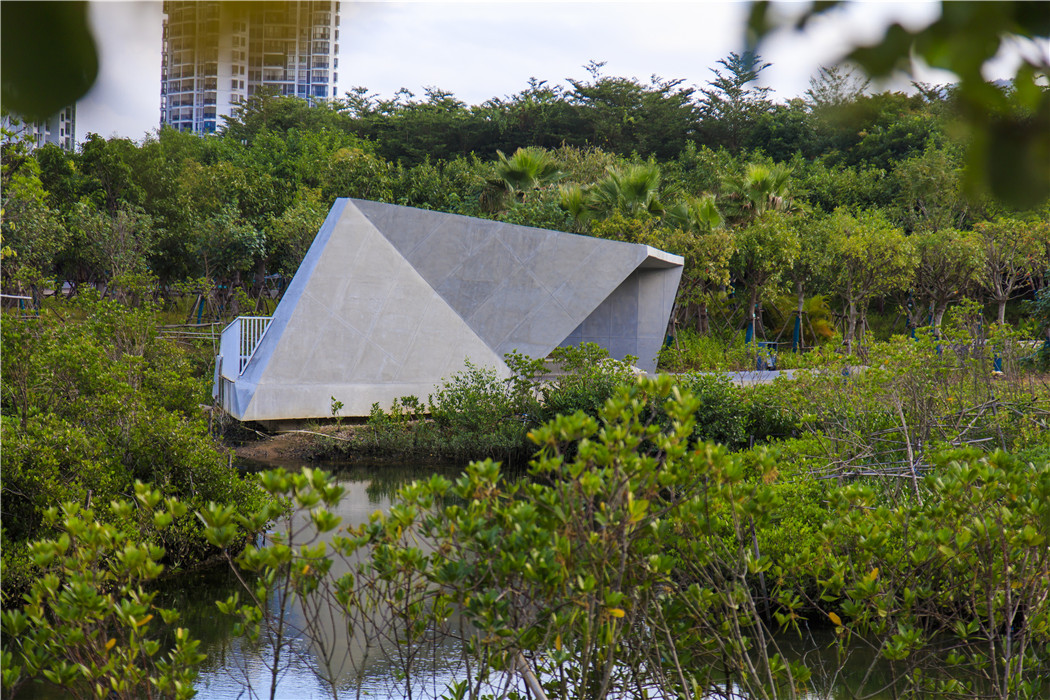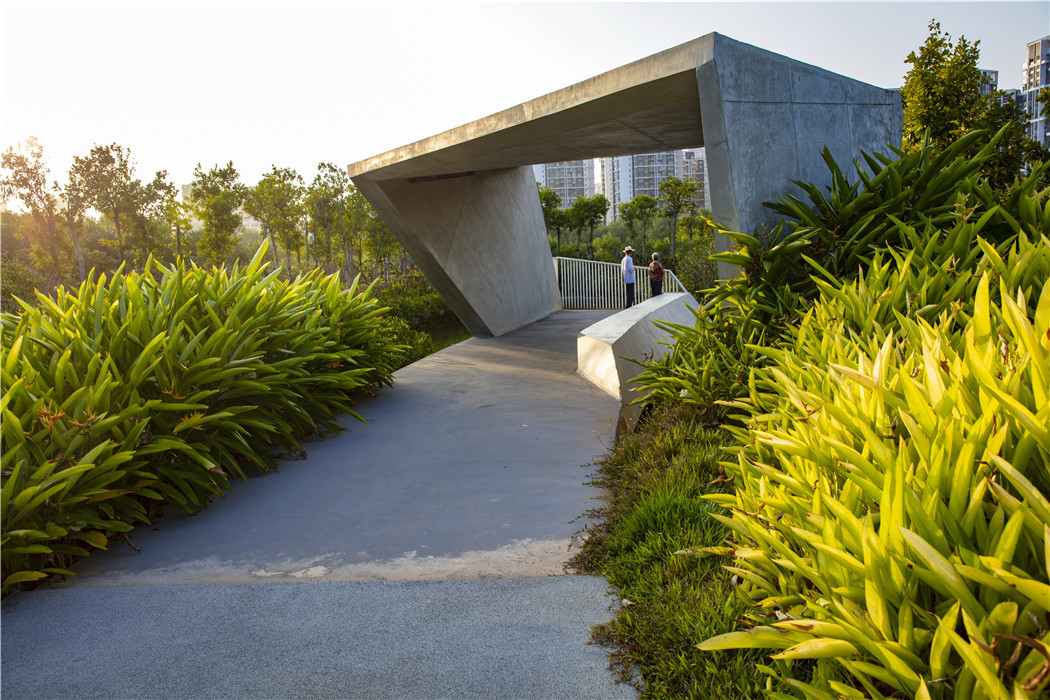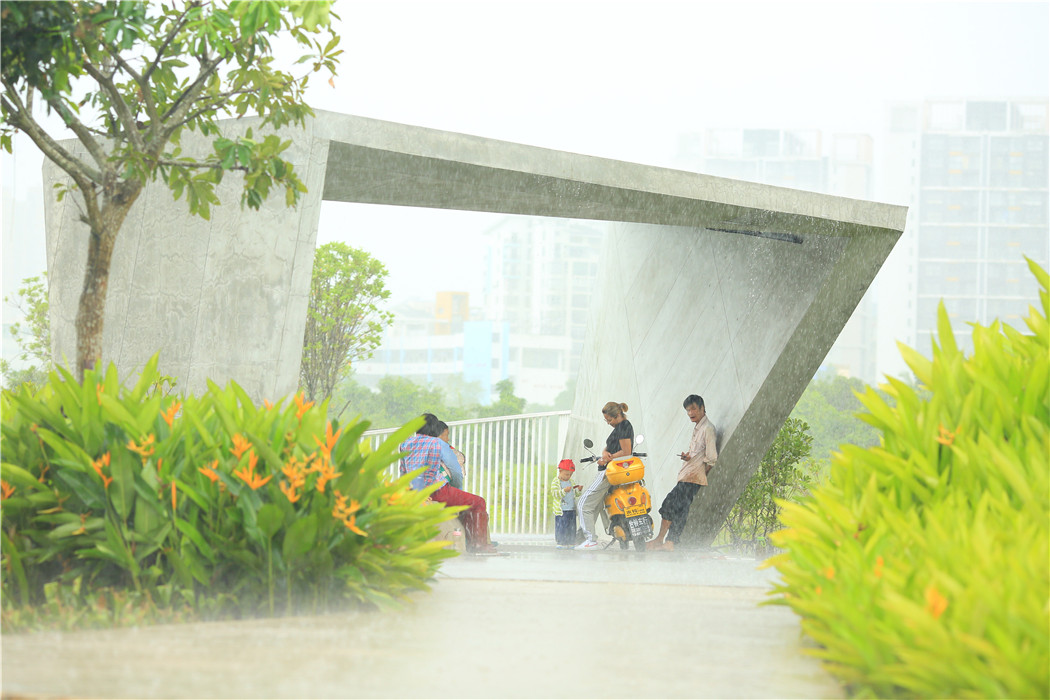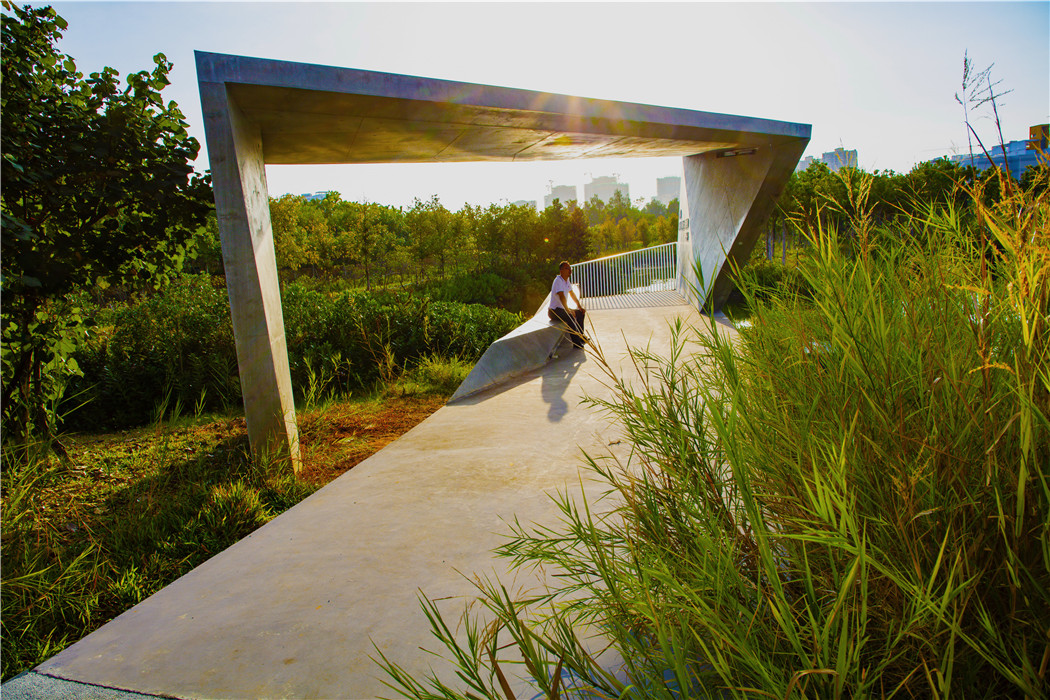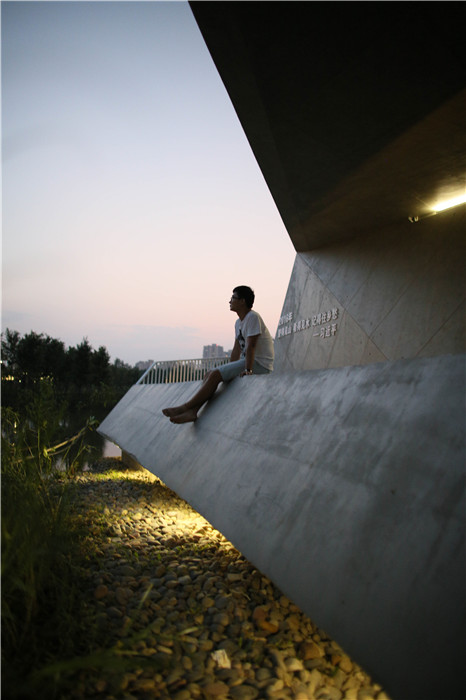Sanya Mangrove Park
Project Information
- Project Location:
- China Sanya, Hainan
- Project Scale:
- 10 Hectares
- Design Time:
- August 2015
- Build Time:
- November 2016
- Client:
- Sanya Housing and Construction Bureau
- Award List:
- 2021 WAF Landscape - Nature Context Winner,2020 ASLA Professional Awards,2019 Best Landscape Architecture of the AZ Awards
- Related Papers
Project Profile
1. Project Statement
Right in the middle of the city of Sanya and in just three years, an area of lifeless land fill within a concrete flood wall has been successfully restored into a lush mangrove park, where nature and people harmoniously share the meeting of ocean tides and fresh water. The project demonstrates the success of form following the ecological processes to produce a designed ecotone that speeds up the natural process of mangrove rehabilitation.
2. Objective and Challenge
Three decades of ruthless development has left Sanya,a tropical tourist city in China’s Hainan Island, a mess of destruction in terms of landscape. Waterways have been polluted and filled with garbage. Concrete flood walls were built to claim land for development that killed the mangroves. In 2015, the city government decided to make dramatic changes, and the landscape architect was called upon to design this demonstration project: Sanya Mangrove Park.
The site is 10 hectares in size, on the bank of Sanya River in the central area of the city. Analysis shows that the site is also critical in terms ecological relationships between the sea and inland, where the daily sea tides meet with the fresh water of the river. High concrete walls have enclosed 10 hectares of land filled with urban debris. An artery road runs by, and there is a 9 meter steep drop from the road to the water, challenging public access to the water.
The design objectives are to rehabilitate the mangroves and make the site a park showcase for citywide urban renewal and ecological recovery. Several site challenges have to be addressed: (1) Wind--the strong annual tropical monsoon storms may harm the process of mangrove rehabilitation and destroy the fledging mangrove planting; (2) Water-- the upper stream floods from the monsoon storm water may wash away the young mangrove community; (3) Pollution: The polluted urban runoffs may damage sensitive mangrove seedlings and the biodiversity of the mangrove community; (4) Access: public accessibility and natural restoration need to be well integrated.
3. Design Strategy
The following design strategies were taken:
(1) By means of cut-and-fill and making using of the material on site, ecotones of water ways and riparian habitats of various elevations are created for diverse fauna and flora, particularly different species of mangroves;
(2) A land form of inter-locked fingers was designed to lead ocean tides into the park that avoids annual strong tropical storms from the sea and the storm water flood and pollution from the upper stream that may harm the establishing mangrove, and maximizes the edge effects and habitat diversity, and creates a dynamic aquatic environment following tides.
(3) Making use of the 9-meter drop from the urban road to the water level, terraces are integrated with bio-swales to catch and filtrate the stormwater from the urban pavement and road, creating public spaces at different elevations.
(4) A network of pedestrian passageways is designed following the landform. five pavilions are strategically allocated allow visitors to enjoy the beauty as well as providing shelter and shading and bird watching.
4. Conclusion
This project is a great success. Just three years after its construction, its objectives have been fulfilled. The mangroves within the interlocked fingers have established well. Along with the flourishing mangroves, fish and birds are abundant, attracting visitors of different ages. The park has become a daily recreational place for the local communities, and a showcase of ecological restoration that not only benefits the natural environment, but the public welfare.
